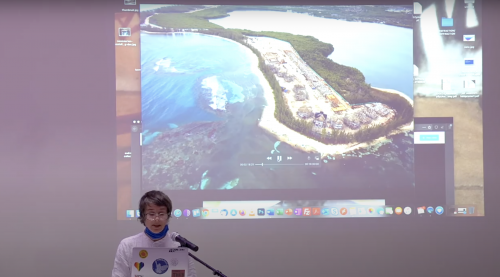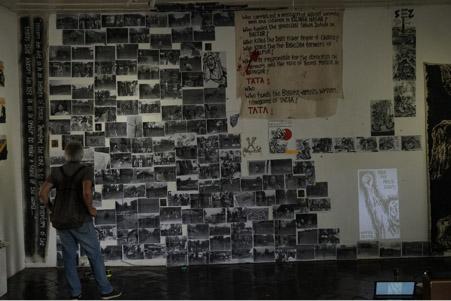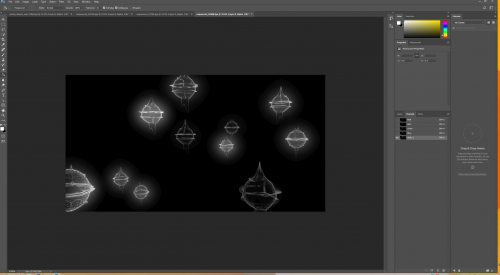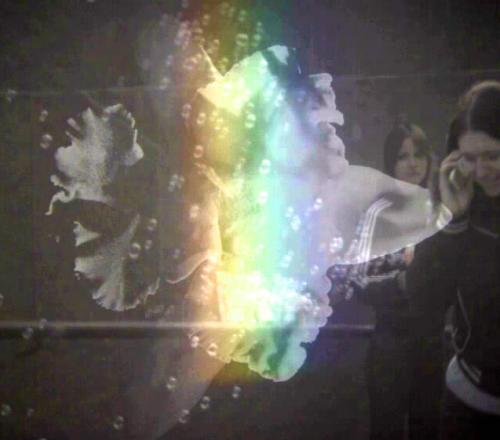SMW: As my first question, would you talk a little bit about your book on the commons? A marine biologist recently told me that the ocean is a repetition of the tragedy of the commons in a global scale.
SF: Ha, it’s the tragedy of capitalism, not the tragedy of the commons. Sure, I imagine that they’re destroying the bottom of the ocean.
SMW: But in a way one would think that it could help to see it in comparison with losing the commons in other fields or in other times as well.
SF: Yes, but the forces that are pushing privatisation and distractions are very strong.
SMW: Related to this and as you analyse in another texts you just mentioned the violence against women has intensified and found new ways. At first I was very surprised that you also used the word acceleration.
SF: Well, increased acceleration.
SMW: Maybe you can talk about this more. How would you describe it, for example in comparison to the nineties?
SF: The nineties are when the new surge of violence begins. I see, and I am not alone in seeing this, that there is an expansion, an increase, in violence against women in every part of the world. That is connected to the new forms of capitalist accumulation. And as I have written in a number of articles, violence against women is not a new thing.
Women have always been concerned with violence against them. Every woman, from the time she is a child, is told she shouldn’t go out at night. She should be careful when she goes out. And we know about rape, we know about battering, and domestic violence. We know that in families, for the father or husband, to beat up the daughter or to beat up the wife is not considered a crime. But in the last three decades the violence against women has increased in every part of the world and it takes many different forms. At the same time there is a connection between them and many women, many feminist agree, that these new forms of violence are connected and motivated by the new forms of capitalist accumulation.
For example Maria Mies here in Germany has written about it.[1] She has written about the phenomenon of dowry murders in India, where men, especially in the middle class, who in the past had access to certain forms of income in more recent years have used their wives to acquire the kind of income and goods that in the past they could acquire through their salaries. Many of them would kill their wives to have access to another dowry. And by that dowry have access to the world commodity market.
In Africa we have seen an insurgence of accusations of witchcraft, with thousands of women assaulted. In many cases murdered, accused of being witches. We have the same phenomenon in India. Particularly in the tribal area, the so-called tribal area, and connected with phenomena of land expropriation, land privatisation, and the destruction of communal regimes.
And we also have many murders of women, big escalation of murders of women in Latin America and Central America. Here too there is an agreement, that one very strong motivating factor has been, and is, the new politics of extractivism. Which means the type of development, which is connected with extraction of raw material, building up hydroelectric plants and so on. These are mega projects that require that large numbers of people be displaced from their land. They are pushed off their land.
One theory, one argument that is being very well accepted is that killing women is an effective way of terrorising an entire population. This is because of what women represent – the fact that the women are usually those who are holding the community together. They are those who are connected with the reproduction of life. They are not usually armed or involved in armed struggle. Therefore attacks on them, physical assaults, appear even more brutal, even more cruel, and the message that is send is that people should leave. Because they are confronted with forces that have no limits. Who are prepared to do anything to push them out.
There is a Brazilian feminist called Rita Segato who has written quite a bit about the new forms of violence. She looks at the connections with the politics of extractivism, and with the fact that more and more – in these new forms of capitalist accumulation, in this new phase of capitalist development – capitalism accumulates in illegal ways, in extralegal ways, in ways that require very direct violence. Segato looks at the connections between these murders of women and the rise of drug trafficking, and the spreading of paramilitant formation, the relation between violence against women and counter-insurgency, the kind of military operation the government, and often with the support of the United States, has launched against people who have tried to transform society.
This is the kind of analysis feminist, and all kinds of women, have elaborated to explain why there is so much violence now. Why there has been an increase in the number of women assaulted, in the number of murders, and an increase also in the brutality. And something more: there is in many cases an attempt to not only not hide, not only not conceal, but to publicise the murder. The bodies of the women are left in the public space. They are mutilated. Rita Segato speaks of a pedagogy of cruelty.[2] She says that this violence is sending a message, it wants to teach something. It is a lesson of terror. It is meant to terrorise the population.
And of course there is also a surge of domestic violence. Not only a violence by paramilitary, “narcotraffico”, and the many many armies, security guards and so on. Now companies have their own private armies. These private armies commit all kinds of atrocities to push people out, when they have to put in a gold mine or when they have to build a throughway, etc. But there is also an increase in domestic violence, also because women want to be more autonomous, men are resenting their new surge for autonomy, men are resenting then now women are often out of their homes trying to make a living. They are not there to give all the services that in the past they may have done. That also is very important. Important to see that this violence is also a response to women’s struggle, to women wanting to be more autonomous. Not being so ready to being servants to men.
... beginning of a longer conversation to be published soon...
Silvia Federici is a feminist writer, teacher, and militant. She is author of Caliban and the witch (2004), Revolution at Point Zero (2012) and co-editor of A Thousand Flowers: Social Struggles Against Structural Adjustment in African Universities (2000). Federici is a professor emerita and Teaching Fellow at Hofstra University.
The text is an excerpt from a longer conversation between Silvia Federici and Susanne M. Winterling.
Footnotes





![Blackwash [working title]](/sites/default/files/styles/medium/public/56fe8ebf-7f16-4486-a251-6d85b1e906c3_4_5005_c.jpeg?itok=rIFeYRMo)












